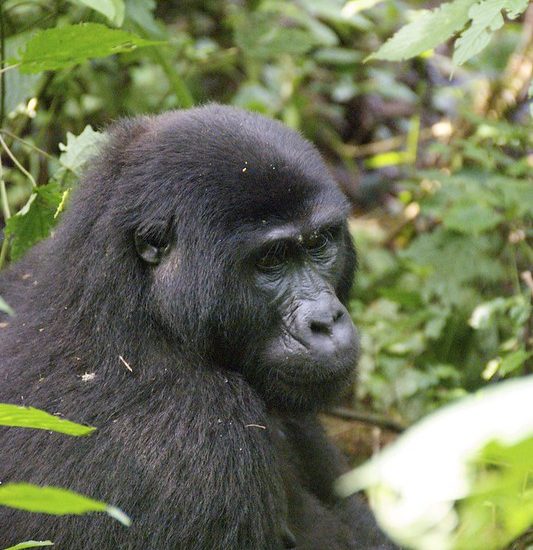Mountain Gorilla population 2024
- September 12, 2024
- Posted by: chosen@202q
- Category: Prepare To Travel Tips

Mountain Gorilla population 2024
The mountain gorilla population has increased to 1,063 as of 2024, from the 1,004 individuals that were recorded in 2018.
By engaging in chimpanzee trekking in Africa, you can also contribute to this figure.
The majority of the revenue generated from gorilla permits is allocated to conservation efforts.
Mountain gorillas are a subspecies of Eastern gorillas located in the Virunga Mountain Range, which encompasses Rwanda, Uganda, and the Democratic Republic of Congo, as well as Bwindi Impenetrable National Park in southwestern Uganda.
The renowned American primatologist Dian Fossey’s conservation efforts prevented the extinction of mountain gorillas in the 19th century. Fossey dedicated her life to the conservation of mountain gorillas and tragically passed away in 1986 in Rwanda.
 Mountain gorillas are close descendants of chimpanzees, as they share 98% of their DNA with humans.
Mountain gorillas are close descendants of chimpanzees, as they share 98% of their DNA with humans.
They possess distinctive nose impressions, an attribute that is comparable to the unique thumbprints of humans.
These gorillas inhabit volcanic mountains at elevated altitudes and possess dense, lengthy fur that facilitates their adaptation to the frigid temperatures.
A silverback gorilla, who is the dominant member of the group, makes decisions regarding the group’s daily activities. Mountain gorillas reside in groups of 5–30 members.
Although they predominantly consume vegetation, they occasionally supplement their diet with termites, insects, and ants.
What is the remaining population of mountain gorillas?
In contrast to 2010, when the population was estimated to be 786 individuals, research conducted in 2018 indicates that there are only 1,004 mountain gorillas remaining in the wilderness.
Half of the mountain gorilla population resides in Bwindi Impenetrable National Park.
The average annual growth rate of mountain gorillas is 3.7%, and it is estimated that their population has increased by 26.3% over the past seven years.
Since 1981, when a census estimated that there were only 254 individuals in the wild, conservation efforts have made significant progress.
The population of Bwindi Impenetrable National Park increased by 6% in 2006 compared to 2002, and it is estimated that it expanded by 12% in Bwindi Forest National Park from 1997 to 2006.
Traditional methods of obtaining dung samples from nests are employed to estimate the mountain gorilla population.
The population development of gorilla families that have been habituated for research has been observed to be higher than that of unhabituated mountain gorillas.
Mountain gorillas were removed from the list of critically endangered primates; however, they continue to rely on conservation efforts to ensure their survival.
They are exposed to a variety of hazards, such as habitat loss, poaching, disease outbreaks, conflict, civil unrest, and more.
The trekking locations of Mountain gorillas
Bwindi Impenetrable Forest National Park and Mgahinga National Park in Uganda, Volcanoes National Park in Rwanda, and Virunga National Park in the Democratic Republic of Congo are all viable destinations for mountain gorilla trekking.
 In Uganda, gorilla permits are priced at $800, $400 in the Democratic Republic of Congo, and $1500 in Rwanda.
In Uganda, gorilla permits are priced at $800, $400 in the Democratic Republic of Congo, and $1500 in Rwanda.
Due to the high demand for permits, particularly during the prime season, it is recommended that gorilla permits be obtained three months in advance of travel in all of the aforementioned countries.
Mountain gorillas are accessible year-round in the Democratic Republic of Congo, Rwanda, and Uganda, although certain months are more favorable than others.
The optimal periods are from December to February and June to August.
Even during the dry season, mountain gorillas inhabit higher elevations with frigid temperatures and occasional precipitation.
Tourists should be adequately equipped with the appropriate gorilla trekking attire, which includes high-quality hiking boots, raincoats, warm clothing, energy foods, drinking water, sunscreens, hats, insect repellents, and garden gloves.
